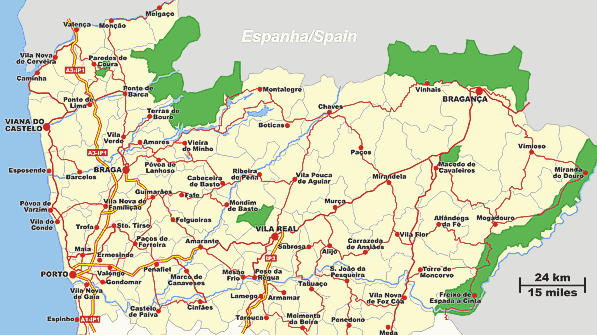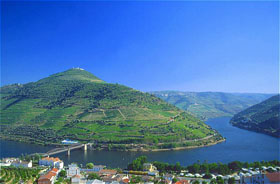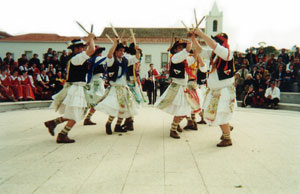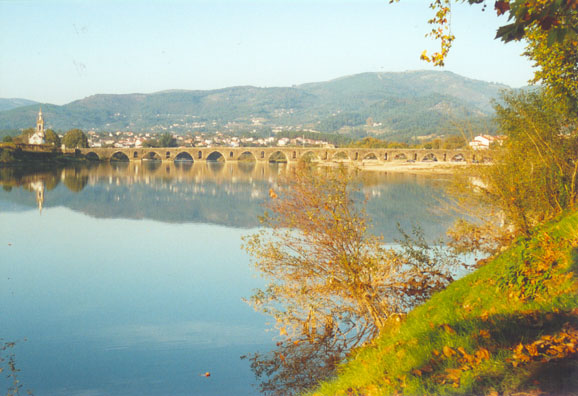 |

|
 |
|
|
| FLASH. |
|
Northern Portugal Douro region North East region of Trás-os-Montes Minho Region |
|
Pinhão, on the banks of the Douro river. |
The Douro river is the longest in northern Portugal. It winds its sinuous way past mountains and cliffs until it reaches the Atlantic near the city of Porto.
Many dams have been built to make the river navigable, which for the visitor means that plenty of pleasure and cruise boats depart from Porto to the Douro region. Between Mesão Frio and Pinhão lies the stretch where the valley sides are lined with terraced vineyards that produce the famous Port wine. But this region is famous for other things besides the wine that is made nowhere else in the world. Signs of prehistoric men are seen in the ancient cave paintings in Vila Nova de Foz Côa. Elsewhere, medieval castles and convents or Romanesque little churches dot the landscape. History, too, is evoked by the manor houses, such as the Baroque mansion at Mateus, near Vila Real, or in the great 17th century sanctuaries, such as Nossa Senhora dos Remédios in Lamego, which plays such an important role in people's devotions.
North East Region of Trás-os-Montes
|
Pauliteiros |
A paradise of unspoiled natural resources, the region is a perfect place for mountain trekking, canoeing or simply resting up in the spa towns of Carvalhelhos, Chaves, and Pedras Salgadas. Vidago has a magnificent park with swimming pools and a golf course
Natural parks of Montesinho and Douro internacional, are really splendid places to contemplate the true essence od this region.
The Region of Minho
|
Ponte de Lima, on the banks of the Lima river. |
Viana do Castelo,Ponte de Lima,Guimarães and Braga are typical cities of these important region. All together, thay keeps alive traditional values while pushing ahead with a dynamic, innovative spirit in its commercial and industrial life. .
Along the coastline north of Porto runs a coastal road linking Vila do Conde, and Póvoa de Varzim to Valença.
It takes visitors past beautiful beaches, summer resorts and enchanting villages, such as Caminha and Vila Nova de Cerveira.
Inland, one must visit the huge national park area coverin.
Three towns that set the tone for this charming area of Portugal are Viana do Castelo, lying upon the estuary of the Lima river; Braga, rich in ecclesiastical history; and the medieval Guimarães.
Mansions and manorial houses in this region open their doors to bed and breakfast, offering visitors a rare privileged glimpse of aristocratic Portuguese traditions, combined with the best modern hospitality can offer.g the mountains of Peneda, Soajo and Gerês



